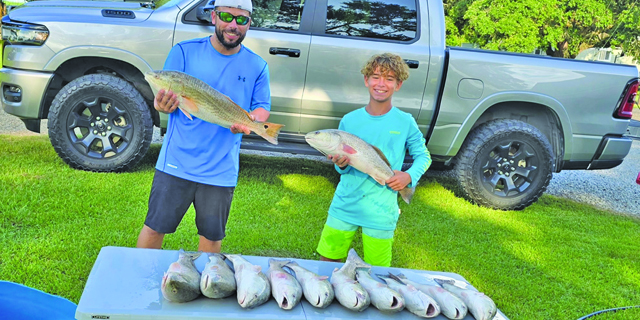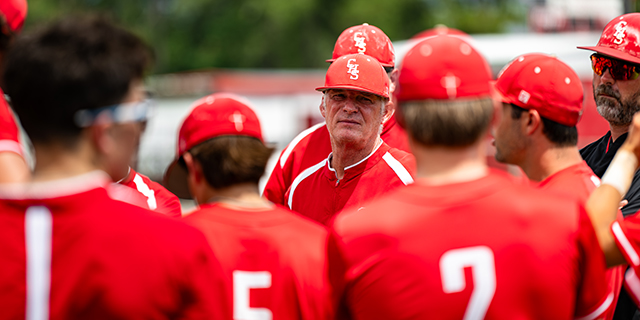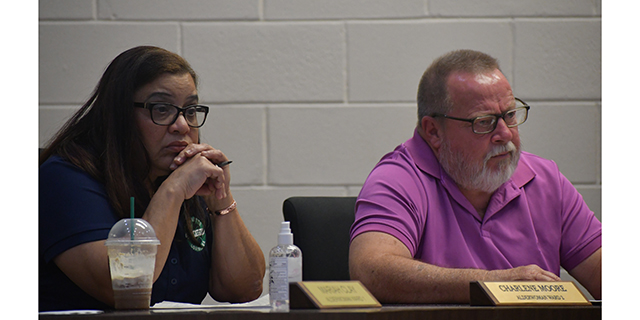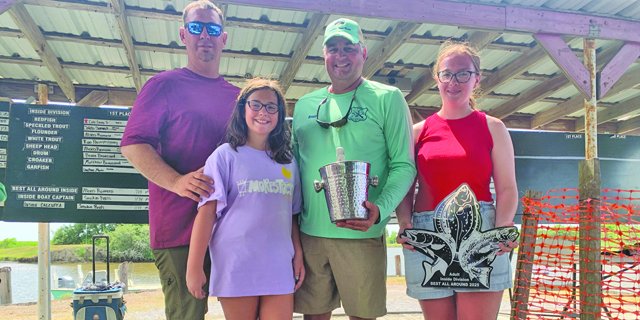LDWF biologists stock 100,000 Fla. bass fingerlings in Fausse Pointe
Published 12:00 am Wednesday, May 22, 2024
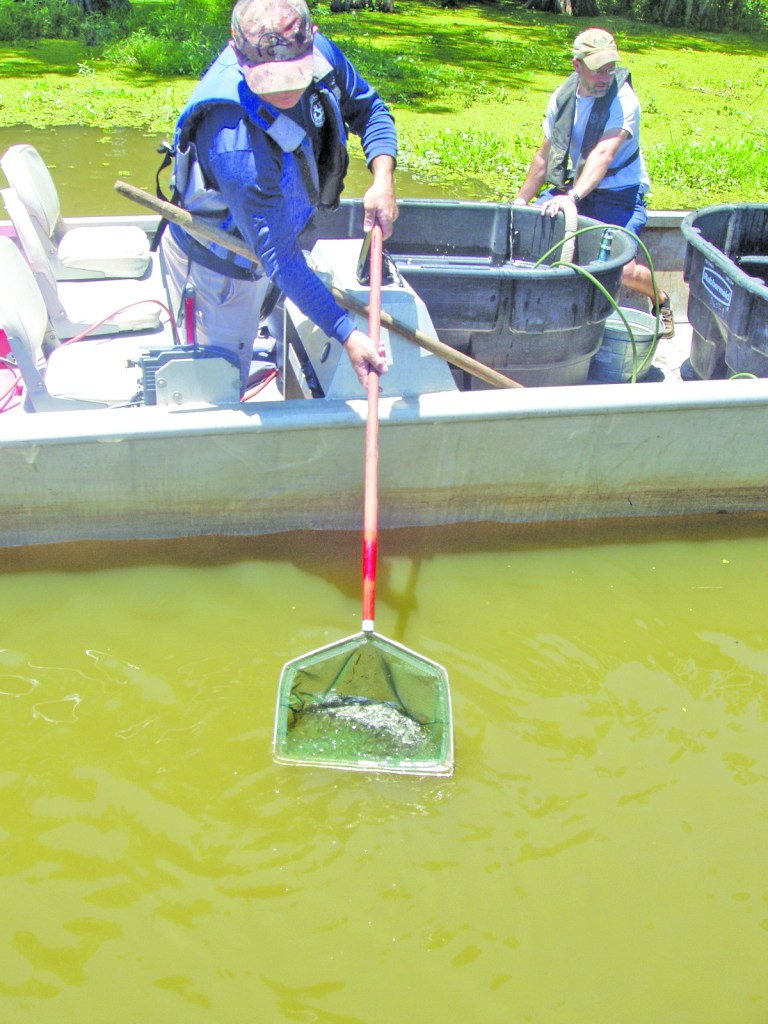
- Brad Launey, foreground, shows a net full of Florida bass fingerlings he is about to release in Sampson's Cove on May 15 at Lake Fausse Pointe. As Louisiana Department of Wildlife and Fisheries District 6 biologist manager, Launey oversaw the release of 25,000 baby bass in Sandy Cove and 75,000 more Florida bass fingerlings the next day in the lake. The fish came from the Booker Fowler Fish Hatchery in Woodworth.
COTEAU HOLMES – Louisiana’s Booker Fowler Fish Hatchery has enjoyed a “great year” this year producing baby bass, good enough to grant a request for Florida bass fingerlings to put in Lake Fausse Pointe.
District 6 biologist manager Brad Launey of Ville Platte oversaw the release of 100,000 tiny fish from the state hatchery May 15 and May 16 as the lake system welcomed Florida bass fingerlings for the first time since 2014. It’s enough to give even the most skeptical bass angler hope for the future.
Trending
Thousands of baby Florida bass ranging from 1 to 2 inches long are swimming in the lake that until recently was unseasonably low and “fishing small,” as they say. Bassin’ success has, for the most part, waned over the past few years causing many local veteran bass anglers to wonder about the bass population.
Booker Fowler Fish Hatchery biologists followed up on Launey’s request for Florida bass fingerlings this spring rather than bringing Florida bass fry. The larger fingerlings have a higher survival rate than the tiny fry.
They were in the good hands of Launey, Ben Young of New Iberia, District 6 biologist supervisor and 18-year veteran, and Peyton Clark of Sunset, District 6 biologist. The LDWF biologists chauffeured the fish in two huge aerated tanks inside a 21-foot long Life Tyme Boat, an aluminum hull built in Jonesville, powered by a 150-h.p. Yamaha.
Catelynn Hatwig, a fisheries technician who has worked at the hatchery two years, delivered the Floridas both days to Lake Fausse Pointe. Hatwig left around 10 a.m. from Woodworth each day and arrived with the precious load of fingerlings an hour later at Lake Fausse Pointe State Park.
So far this month in District 6, Floridas have been stocked in Chicot Lake, Spring Bayou, Crook Creek and Lake Fausse Pointe, Launey said.
On May 15 at midday, Launey opted to stock the first batch of Florida bass fingerings in a huge cove known as a spawning area.
Trending
After gently depositing 25,000 fingerlings in Sandy Cove, Launey, Young and Clark went out again at midday May 16 to release 75,000 baby Florida bass in borrow pits along the West Atchafalaya Basin Protection Levee, including an area locally known as the “Stump Field,” in a few of the Texaco Field canals and in Sampson’s Cove.
“That’s it. That’s all of them. I spread them out pretty good,” Launey said s few hours later.
The freshly stocked baby bass’ growth rate all hinges on the forage base and the habitat wherever the fingerlings are released in Lake Fausse Pointe, according to Launey, who has been the district’s biologist manager the past two years after working 10 years in District 6.
“We tried to stock them in areas where habitat is suitable for them, so we can lower the mortality. So, hopefully a year from now, they’ll have anywhere from 9- to 12-inch fish,” he said.
Launey emphasized LDWF isn’t trying to replace the native largemouth bass gene pool in Lake Fausse Pointe.
“We’re just trying to introduce that Florida gene in there to increase the chance of fishermen catching a trophy-sized bass. Trying to get those 8-plus pound bass,” Launey said.
From 2000-10 LDWF stocked 1.7 million Florida bass fingerlings in the lake. Then added 80,300 more of that size Floridas in 2014.
Since 2014, the state agency has added several million Florida bass fry in annual stocking in 2019, ’21, ’22 and ’23. The fry look like dirt particles in the water, nearly microscopic — 7.27 mm long, or 0.286220 inches – and it takes 453.49237 grams of fry to total 1 pound. The high end survival rate for fry is 7 percent, according to Texas Parks and Wildlife biologists.
When LDWF’s District 6 biologists submitted the lake’s bass for genetic testing at LSU, the Florida bass gene percentage gave them a reason to continue introducing Floridas into the lake. Testing in 2006 showed a 10 percent Florida bass influence in the native population and 12 percent in 2007.
The critical test came in 2018, when results showed 19 percent of the lake’s bass had Florida genes. That signaled a green light for Florida bass stockings in the future, according to the district’s biologist manager at the time.
Those 2018 genetic test results, released in late January 2020, showed 81 percent of the bass were native bass, 18 percent were F1s (cross between native bass and Florida), and 1 percent were pure Florida bass.


